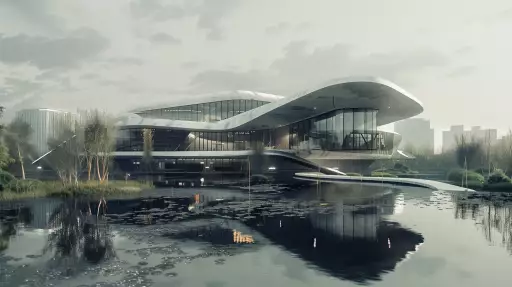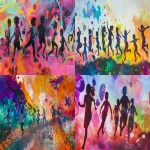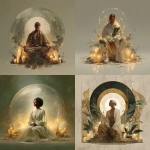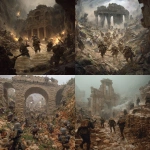Explore the Best AI Image Gallery

Beyond the Canvas: How 5G is Unleashing a New Era of Creative Expression
The creative landscape is on the cusp of a monumental shift, driven by the transformative power of 5G technology. This fifth-generation wireless network promises unprecedented speed, low latency, and increased bandwidth, paving the way for a future where creativity knows no bounds. Artists, designers, musicians, and storytellers are embracing this technological revolution, leveraging its capabilities to push creative boundaries and redefine artistic expression.
A Symphony of Connectivity: 5Gs Impact on Creative Collaboration
Collaboration is at the heart of many creative endeavors, and 5G is supercharging this process. Imagine a world where artists across continents can collaborate in real time, sharing ideas, designs, and inspiration seamlessly. With 5Gs ultra-low latency, synchronous interaction becomes a reality, enabling teams to work together as if they were in the same room, regardless of geographical distance.
This enhanced connectivity opens doors for groundbreaking projects that transcend traditional limitations. Architects can collaborate with engineers and designers on intricate 3D models, musicians can jam remotely with collaborators across the globe, and film crews can share footage and feedback instantly, streamlining the production process.
Immersive Experiences: Bringing Creativity to Life
5G is ushering in an era of immersive experiences, blurring the lines between the physical and digital realms. Augmented reality (AR) and virtual reality (VR) applications are taking center stage, empowering creatives to build interactive worlds, engage audiences on a deeper level, and push the boundaries of storytelling.
Imagine attending a virtual art gallery where you can walk through immersive installations, interact with artwork, and even experience the artists creative process firsthand. 5G enables these experiences by providing the bandwidth and responsiveness needed for seamless interactions within AR and VR environments.
The Canvas of Tomorrow: New Tools for Creative Expression
5G is not only enhancing existing tools but also giving rise to entirely new avenues for creative expression. Imagine wearable technology that allows artists to translate their movements into digital art, or haptic devices that enable sculptors to feel the texture and form of their creations in a virtual space. These possibilities are becoming increasingly tangible thanks to 5Gs capabilities.
Furthermore, AI-powered tools are being integrated into creative workflows, assisting artists with tasks such as generating musical compositions, designing patterns, or even writing scripts. This collaboration between human creativity and artificial intelligence has the potential to unlock a new level of artistic innovation.
Navigating Ethical Considerations
As 5G technology reshapes the creative landscape, it is crucial to address the ethical implications that arise. Data privacy, algorithmic bias, and the impact on traditional creative practices are important considerations that require careful attention.
It is essential to ensure that 5G-powered tools are used responsibly and ethically, promoting inclusivity and diversity within the creative community. Open dialogue and collaboration between artists, technologists, policymakers, and ethicists will be crucial in navigating these complex issues.
The Future of Creativity: A World Transformed
5G is not merely a technological advancement; it is a catalyst for profound change within the creative industry. Its impact extends beyond the tools and techniques used by artists, shaping the very nature of creative expression, collaboration, and audience engagement.
As we venture into this new era, we can expect to witness a flourishing of creativity, driven by the limitless possibilities that 5G unlocks. The canvas of tomorrow will be vast, immersive, and interconnected, allowing artists to explore uncharted territories and share their visions with the world in unprecedented ways.

](https://images.ai-img.art/thumbnails/150/c2241c1eabdcb7b9a98be19a7e8d850b6cffe0e0c91c1ccda8dd807e2a96b187.webp)











](https://images.ai-img.art/thumbnails/150/47d44e177f427ea6b32f96ea225db96c5158850a0cf01d1bad93e45dd4594430.webp)


](https://images.ai-img.art/thumbnails/150/44b76c49c47b4c47f13eac7883c63827d3f89aa77fe64ce0cbecb9d3ce434499.webp)
](https://images.ai-img.art/thumbnails/150/c48401bc3fad7ff7f2dbd37b894d3f53cb42d5072dfacb8bfdcdeeef28a29b04.webp)































](https://images.ai-img.art/thumbnails/150/09ccae5e68e2b6da6b5da87ef69f7eb09e80c99ca39ba886c5c3773cbb3b89ba.webp)